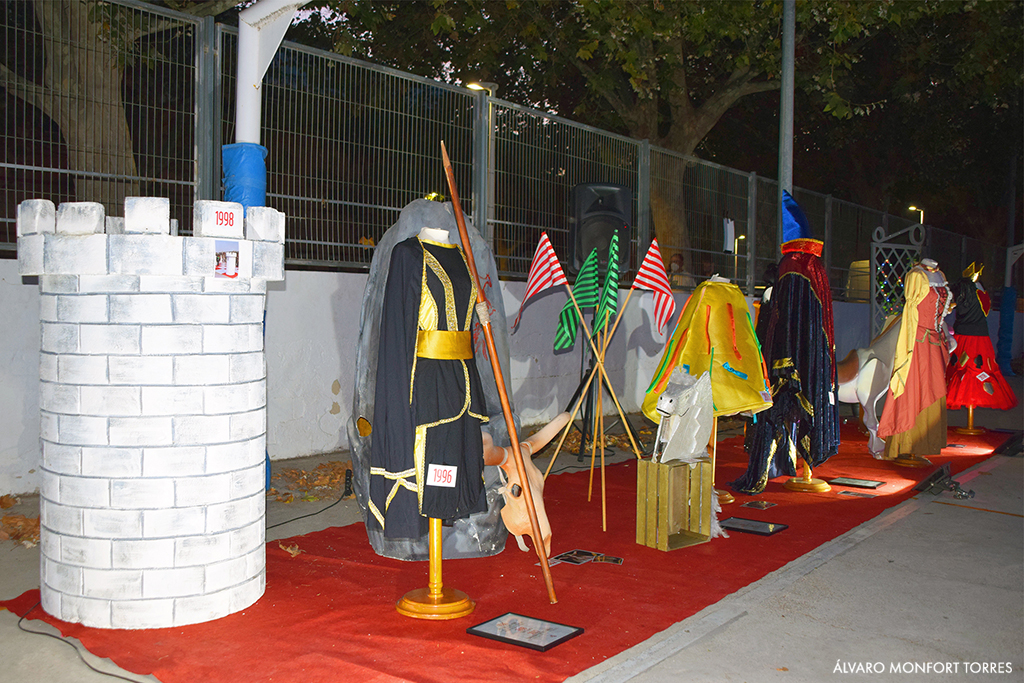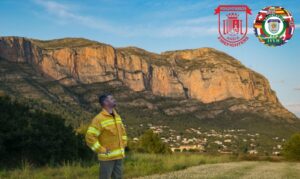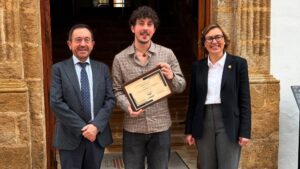Xàbia’s Living Chess reviews the last 25 years in a great evening
25 years of living chess were celebrated in fine style with music, a little of theatre and props and photos of previous editions.

Monday 2nd August 2021 – ÁLVARO MONFORT with Mike Smith
Last Saturday, the Comissió de Festes Mare de Déu de Loreto celebrated the 25th anniversary of the renowned Living Chess event. Given the difficulty of carrying out the preparation of an event of these characteristics in the midst of the current pandemic, and following current health recommendations, a great extraordinary concert by the Orquestra Syfònica del Center Artístic Musical de Xàbia was organized under the title “La Música dels Escacs Vivents de Xàbia: 25 anys d’una Festa d’Interés Turístic Nacional“. It was a fantastic evening that reviewed the two and a half decades of history of the event through its extensive soundtrack.
The event began with a bit of theatre that characterized the Living Chess. A pawn of the edition of the last edition in 2019 – “A family of music, four monsters and a putxero” – searched the stage for the numbers that would crown the cake of its 25th anniversary. However, when only finding a 2 and a 5, another pawn, this time from the 2011 event “Romeo and Juliet“, proposed to celebrate the 25th anniversary of the Escacs Vivents de Xàbia together with the rest of the public that had come to accompany them.
Next, Rafael Andarias, event director and Vicente Gavilá, president of the Comissió de Festes Mare de Déu de Loreto, made a few brief interventions. Andarias remembered people linked to the initiative who had passed away over the past quarter of a century and whose contribution had been key to the continuity of the event. On his part, Gavilá valued the work carried out by the members of his commission so that each section of the show appears in each edition.
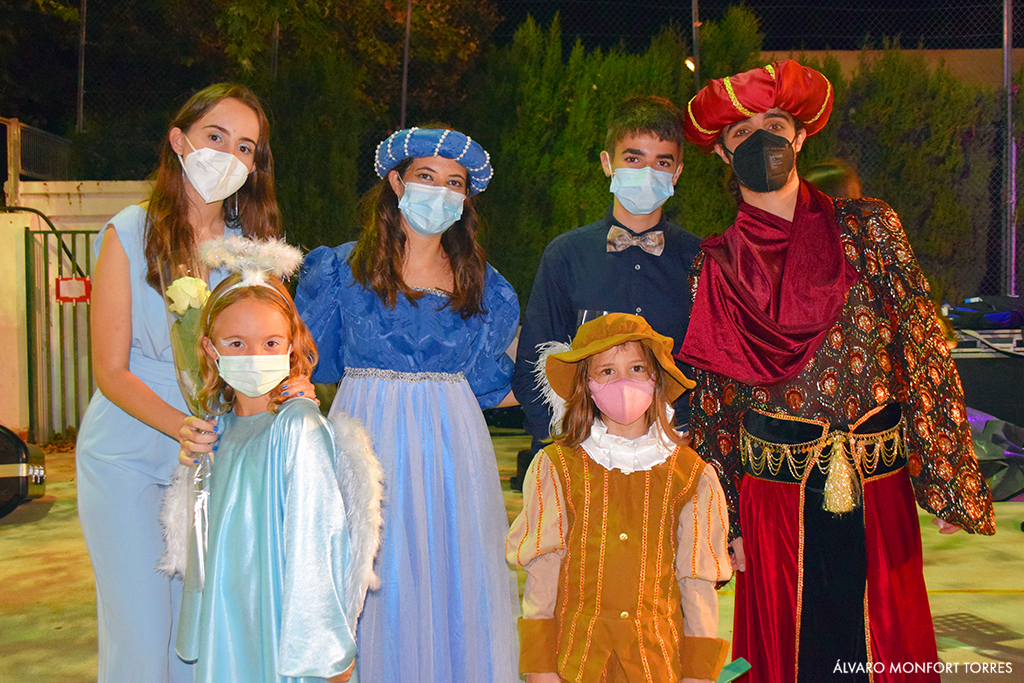
Laura Bou (who joined the living chess family in the 2019 edition) and Javier Torrijos (who has been part of the group since 2013) led the event introducing each of the compositions and reviewing the history of the past quarter of a century. Both recalled the beginnings, relevant people within the achievement of the event, how the declaration of the Festival of National Tourist Interest was forged, anecdotes – such as the one in 2011 when it began to rain after the children performed the rain dance in one scene – the remarkable roster of guests of honor who have participated reading the movements of the black women, the trips taking the Living Chess to Vitoria, Linares or Thiviers in France, and the educational and socially reflective work that is carried out, through it, with the children and youth of the municipality.
Around 45 musicians delighted the public, under the baton of Joan Bou, with an increasing repertoire. Some of the soundtracks that have brought greater grandeur to each of the games were recalled, such as Harry Potter, Forrest Gump or Rio Grande, the energetic tribute to Elvis Presley, the mythical “Thus Spoke Zaratrusta” by Richard Strauss or the music by S. Prokofiev, among others.
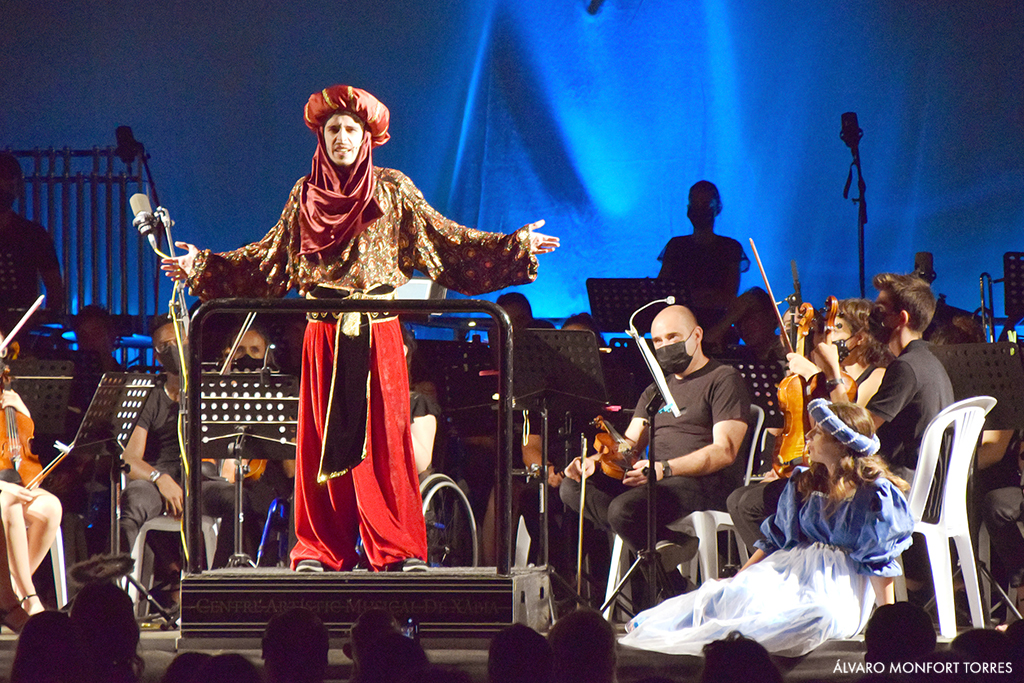
The farewell was carried out by Al-Azraq, the Andalusian leader who captained several clashes in the south of the Kingdom of Valencia and dominated the interior of La Marina and who was the axis of the 2000 edition. Arnau Dkaidek (who has participated in the editions of 2018 and 2019) played the Mudejar lord and Raquel Violero (author of the scripts for the last two editions) as Amira, the lover of Al-Azraq and whose legend today gives its name to Barranc de l’Encantà. Both gave way to a composition dedicated to the fallen man in Alcoy by the director Juan Francisco Sanjuan Rodrigo. Taking advantage of the fact that he was among the public, Bou invited him to close the event directing the orchestra in the interpretation of “Xàbia”.
The concert was complemented by a small sample of costumes and props representative of the artisan work that has been carried out throughout all this time to magnify and dignify each of the editions and photographs so that the public could know how it looked on stage and who were some of the children and young people who carried them.
